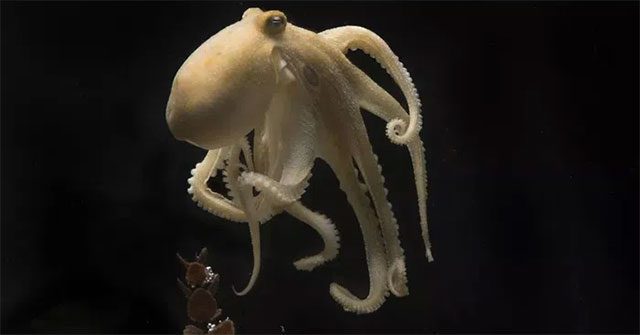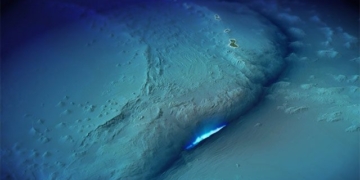Many animals die shortly after reproduction, while mother octopuses eat their own eggs just before they hatch, and then even tear into their own flesh, consuming their arms… Why is this happening?

California two-spot octopus with blue rings on either side.
As the eggs of the octopus near hatching, the mother stops eating her eggs and tends to self-destruct by throwing herself against rocks, scratching her own skin, and even consuming her own arms.
Now, researchers have discovered chemicals that may control this madness in mother octopuses. After an octopus lays eggs, the mother undergoes changes in cholesterol production and utilization in her body, leading to increased production of steroid hormones—a biochemical change that ultimately leads to the mother octopus’s demise.
Z. Yan Wang, an associate professor of psychology and biology at the University of Washington, USA, stated that some of these changes may suggest explanations for longevity in invertebrate species in general.
Programmed to Die
From her days as an undergraduate English major, Wang was fascinated by the reproductive behaviors of mother octopuses. Transitioning to graduate studies in science, she delved deeper into the phenomenon of mother octopuses dying after laying eggs. Until now, no one has understood the purpose of this behavior. Hypotheses suggest that this death serves to “distract” predators from her eggs or that the mother’s body releases nutrients into the water to nourish the eggs.
Wang posits that this death may actually protect the young octopuses from the older generation. Since octopuses are cannibalistic, if older octopuses are around, they might consume the young.
A 1977 study by psychologist Jerome Wodinsky at Brandeis University found that the mechanism behind this self-destruction lies in the optic glands, a set of glands near the octopus’s eyes (similar to the pituitary gland in humans). Wodinsky observed that if the nerves to the optic glands were severed, the mother octopus would abandon her eggs, begin eating them, and live an additional 4 to 6 months. This is an impressive extension of lifespan for creatures that typically live only about a year.
In 2018, a genetic analysis of the same species revealed that after laying eggs, genes in the optic glands produce steroid hormones (partly constructed from cholesterol components) that begin to overproduce. They focused on the steroids and related chemicals generated by the optic glands in two-spot octopuses.
Significant Changes
Researchers identified three distinct chemical changes occurring around the time the mother octopus lays her eggs. The first was an increase in pregnenolone and progesterone, two hormones associated with reproduction in many species.
Even more surprisingly, mother octopuses began producing higher levels of a type of cholesterol known as 7-dehydrocholesterol, or 7-DHC, a toxic compound. In humans, excessive production of 7-DHC can lead to the genetic disorder known as Smith-Lemli-Opitz syndrome, which results in intellectual disabilities, behavioral issues, and physical abnormalities such as extra fingers and toes, as well as cleft palate.
Finally, the optic glands also began producing more components for bile acids, which are acids produced by the liver in humans and other animals. While octopuses do not have the same type of bile acids as mammals, they seem to create building blocks for those bile acids.
Wang noted that bile acid components are crucial for regulating the lifespan of invertebrate species.


















































